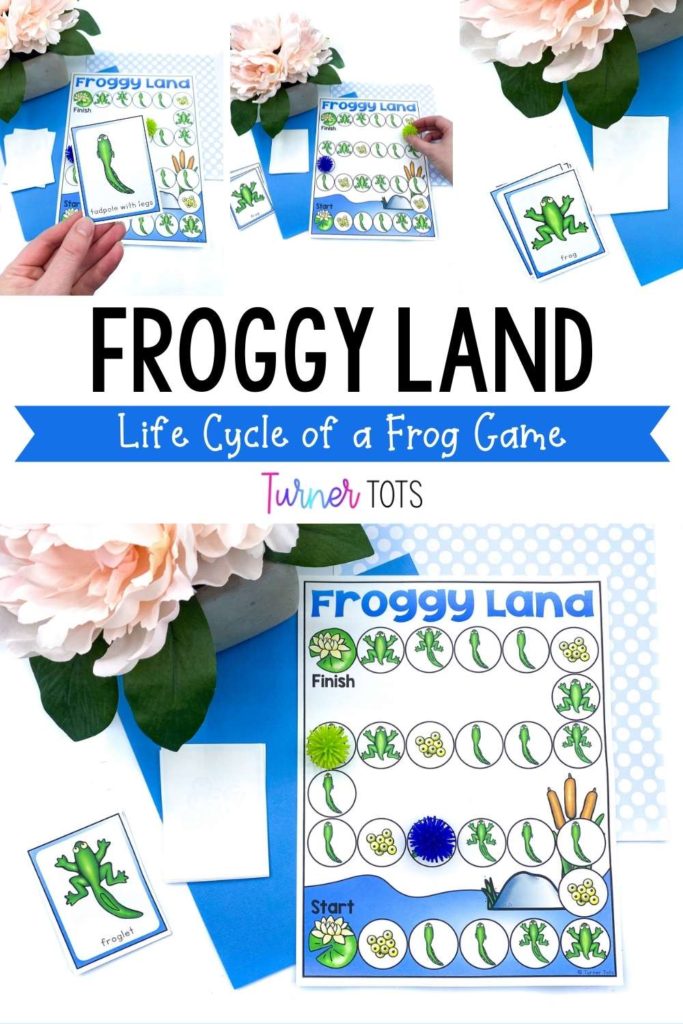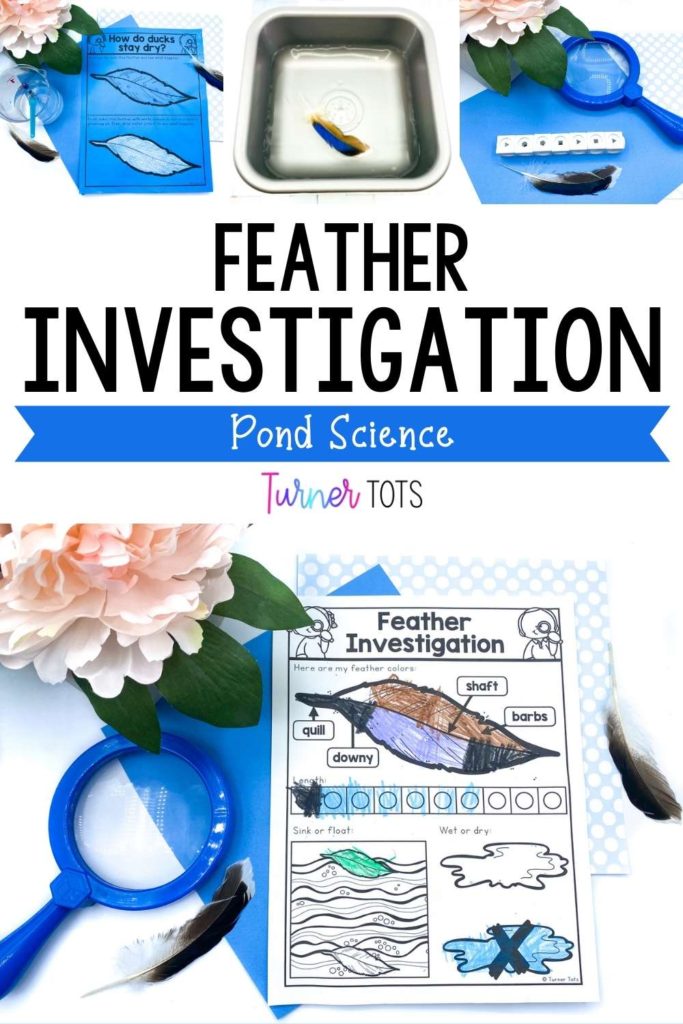The weather is getting warmer here in Colorado, and we have been taking daily walks right after dinner. The other day, we discovered a pond in our neighborhood filled with goslings, ducklings, and frogs, and it has become a favorite spot for my girls. Ever since we discovered the pond, the questions have started rolling in: Where do goslings come from? Why are they different colors? Where are the baby frogs? All of those inquiries have led us to these pond science activities. As always, I have tried to make anything and everything hands-on, which always amps up the engagement with the little ones. Take a look at our pond science activities!
This post contains Amazon affiliate links, which means I earn a small commission from qualifying purchases at no extra cost to you by linking to Amazon.com. See the full disclosure here.
Pond Lesson Plans

Pond Life Sort
Pond Science Activities
After reading Over and Under the Pond by Kate Messner, which introduces students to the diverse pond life in such a beautifully illustrated book, we were able to start our science investigations for the week.
First, we took a look at some photographs of pond life. The kids sorted these photographs into the categories of “Above” and “Below.” Some of the creatures were a little tricky, so we chose to sort them into where they spent the most time. It was such a great way to build our vocabulary of pond life and make inferences about each creature.
After the sort, these hung beautifully in our science area for the students to reference throughout our unit.
Materials:
Life Cycle of a Frog
Sequencing Activity
Next up, we learned all about the life cycle of a frog. So fascinating how much they change throughout their life!
We first sequenced cards with pictures of each stage. Then, we used plastic jumping frogs and jiggly eyes to model the life cycle. Just cut off the legs on some of the plastic frogs and glue on pointy foam tails (see picture).
Materials:
Life Cycle of a Frog
Game
What’s better than learning though a game, especially one like Candyland?
Froggy Land is the perfect place to do just that! This exciting and educational board game is played like Candyland, but instead of learning about candy, you’ll be learning about frogs. From egg to tadpole to adult frog, you’ll go through all the stages of a frog’s life cycle.
Not only will you have fun playing this game with your friends or by yourself, but you’ll also be learning something new. So why not download a copy for your class today?
Materials:
- All About Ponds
- counters
Frogs vs. Toads
Sort the Differences
Growing up, we used to catch toads in buckets at Lake McConaughy. After sunset, they would be hopping everywhere.
But during all of those years, I never actually sat down and thought about the differences between frogs and toads. Well, not until teaching my little ones. That is one of the benefits of teaching: I am constantly learning!
We made this frogs versus toads activity interactive by printing the cards and using Velcro dots to sort them on the poster. Such a great pond science activity to get them (and me) thinking! I had no idea that frogs had teeth!
Materials:
Build a Beaver Dam
STEM Activity
On one of our hikes up in the mountains, we stumbled upon a beaver dam. I was shocked! I have never seen one in real life before. This led us to watch a PBS video about beavers on YouTube.
Then, we decided to make it a STEM challenge to build our very own beaver dams. We collected leaves, rocks, sticks, plants, and bark to use as our construction materials. Don’t forget the mud – that’s the glue that holds the dam together! We used a batch of homemade play dough as our mud, which was perfect for the little ones’ creations.
My favorite part was walking upstairs and hearing them sing, “Dam, dam, dam!” That was a literal laugh-out-loud moment.
Tip: The materials pictured can be used for about 2-3 students. For larger classes, take a picture of students when they finish their dam. Then, deconstruct to use the materials again.
After completing the beaver dams, we drew pictures of our designs. This is definitely something that needs to be modeled. We started by pointing to a material used at the bottom. Then, we pointed to the next material used at the bottom, drawing it layer by layer. These types of drawing help our little ones pay close attention to detail and use their visual discrimination skills.
Materials:
- All About Ponds
- rocks
- sticks
- leaves & plants
- brown play dough
- serving tray
Feather Investigation
Duck Science Activity
On our adventures down by the pond, we found some feathers that we just had to investigate. Instantly, my little one knew that we had discovered a “boy duck” feather because of the blue color.
This investigation began first with our little demonstration of “How do ducks stay dry?” We used a white, waxy crayon to color in the bottom feather, acting as the duck’s preening oil. Then, we used a paintbrush to drop water on the top, unprotected feather. What happened? It got wet!
We repeated the process by dropping water on the bottom feather and discovered that the water did not get the feather wet. That’s how ducks stay dry! They use their preening oil (which is actually waxy like crayons) to coat their feathers. If you observe ducks, you will see them constantly putting their feathers in their mouths. Well, this is why: so they have dry feathers that are ready for takeoff in an instant! The PBS video clip below shows the ducks in action.
Next, we whipped out our magnifying glasses to inspect our feathers. We colored in the feather on the sheet to match the colors on the actual feather. Then, we measured the feather using snap cubes and colored in the length. We made predictions on whether the feather would sink or float and get wet or stay dry before placing it in a tub of water. Finally, we colored in the results on the sheet with this hands-on feather investigation for your pond science activities.
Materials:
- All About Ponds
- feathers
- magnifying glasses
- tub of water
- snap cubes
You might also like...
MORE Pond Activities
Your little one is going to love learning about ponds with our fun and educational activities! We have a variety of pond activities that will help your preschooler learn all about ponds, from the life cycle of a frog to pond life sort. They’ll also be able to investigate feathers and even build their own beaver dam!















